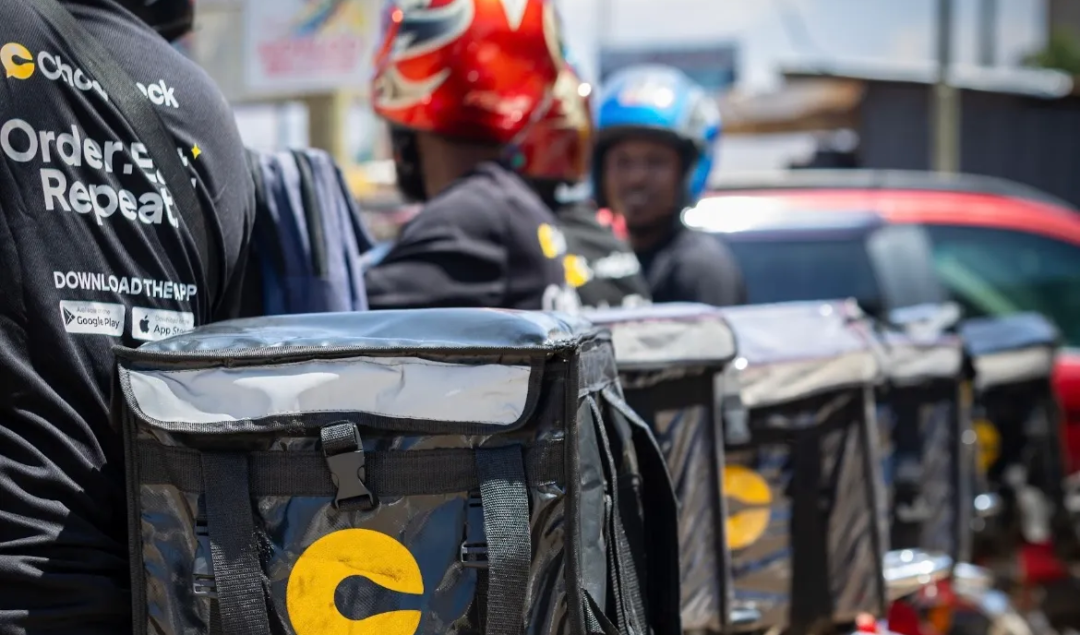We take a deep dive into Kantanka’s story – its founding vision, technology, products, politics and controversies – to separate the dream from the reality.
Kantanka Automobile: Ghana’s Bold Automotive Experiment

Kantanka Automobile is Ghana’s homegrown car company, founded by a charismatic preacher-engineer determined to prove that a black African nation can build its own cars. Apostle Dr. Ing. Kwadwo Safo Kantanka – leader of the Kristo Asafo (Christ’s Army) mission – has long touted science and technology as keys to African empowerment. In his own words, Safo’s goal is to “free Africa from the bonds of slavery” through innovation. From humble prototypes in the 1990s to an array of SUVs, sedans and pickups today, Kantanka’s journey is part gospel, part engineering odyssey. Ghana’s media and public are fascinated, oscillating between pride at a “made-in-Ghana” brand and skepticism about how “made in Ghana” it really is. We take a deep dive into Kantanka’s story – its founding vision, technology, products, politics and controversies – to separate the dream from the reality.
Founding Vision and Background
Kantanka’s story begins with Apostle Kwadwo Safo (often styled “Dr. Ing.”), an Ashanti-born inventor and pastor. A self-described polymath – “preacher, inventor, innovator, physicist and chemist, biologist, agriculturalist and philanthropist” – Safo says he has devoted his life to uplifting Africa with technology. After training as a welder and studying at Ghana Technical Institute, he founded the Kristo Asafo Mission (also called the Christ Reformed Church) in 1971. Over decades he built the church into a network with annual “Technology Exhibitions,” where members showcase inventions. It was in that context – part church exhibit, part lab – that Safo unveiled Ghana’s first car prototype in 1998, the “Kantanka Saloon”. By 2006 he had a 4×4 SUV (Onantefo I) and, in 2007, even a 26-foot stretch limousine “Obrempon”. The company claims these early vehicles used about 30% Ghana-made parts – one of the first domestically crafted cars in Africa.
In 1994 Kantanka Automobile Company Limited was formally founded as a research institute under Safo’s leadership, later incorporated as a limited liability company in 2004. Its mission, as touted on its site, is to “research, design and develop cars and automotive components” suited to Ghana’s conditions. The name “Kantanka” itself, echoing Safo’s surname and perhaps an acronym for a church tech center, became synonymous with national pride in innovation. Safo often invokes Ghanaian nationalism in his branding: for example, he quotes Ghana’s first President Nkrumah – “the Black man is capable of managing his own affairs” – to argue that Africans should build the cars they drive. In promotional talks he frames Kantanka not as mere commerce but as African self-reliance manifest. Indeed, Kantanka’s early ethos blended faith, technology and patriotism: churchgoers at Safo’s Kristo Asafo Mission were expected to buy the locally made car, turning evangelical enthusiasm into economic loyalty.
While championed by supporters as Ghana’s automotive pioneer, the venture has its skeptics. Some critics call Safo a “false prophet,” suggesting Kantanka serves more as a vanity project or tax loophole than a real industry. Controversial reports (disputed by Kantanka’s PR) have suggested most Kantanka cars are actually assembled from Chinese-made parts. Nevertheless, Safo’s vision is deeply woven into his personal faith and Ghanaian pride. As GhScientific’s profile notes, Safo believes science and tech can “empower Africa” and has made dozens of patented inventions. He even won an African science award in 2019 for this vision. In short, Safo’s founding promise for Kantanka was bold: teach Africa to build its own cars, on its own terms.
Plant, Engineering and Production
Kantanka’s manufacturing complex is located in Gomoa Mpota (Central Region), where the company says it builds on-road and off-road vehicles. Officially it “designs, manufactures, assembles and sells luxury cars” for Ghanaian terrain. However, on-the-ground reporting suggests the reality is more assembly and adaptation than in-house R&D. Industry observers note the cars use Chinese-designed chassis and parts, with final assembly done locally. In fact, a 2016 Jalopnik article asserted that Kantanka gets “just about everything shipped over from a Chinese automaker,” leaving local operations largely at the assembly line. The BBC’s automotive logistics site likewise has suggested Kantanka vehicles resemble older Chinese models rebadged with the Kantanka logo. Kantanka’s CEO Kwadwo Safo Jr. acknowledged a partnership with China’s Chongqing Big Science & Technology to import critical components. The US journalist Raphael Orlove summarizes: “Kantanka’s unique contributions amount to little more than the badges and trim”.
This Chinese partnership supposedly installed modern production facilities. GhScientific reports that before working with China, Kantanka could make just one car a year with hand tools; after the partnership it could churn out up to five vehicles per day. (Local data on actual throughput is scarce, but the company claims a modest output – about 250 cars per year by one estimate.) Kantanka’s staff counts are not public, but the operation includes stamping, welding and painting lines, and test areas, all run by local Ghanaian workers. The plant also produced 85 pickup trucks for Ghana’s National Identification Authority in 2021, under a government contract to promote local goods. In meetings with officials, Safo Jr. has blamed high import duties for limiting Kantanka’s growth and complained that Kantanka pays the same taxes as foreign brands.
On engineering, Kantanka claims a cadre of Ghanaian engineers. Its website bills itself as an OEM that even manufactures engine blocks locally. Yet independent auto experts note Kantanka models share engines and frames with Chinese makers like Foday and Dongfeng. For example, the pickup Omama advertised by Kantanka uses a 2.5-liter turbo-diesel engine (136 hp, 340 Nm) – similar to an engine in Chinese trucks. Kantanka literature boasts 4×4 suspensions and off-road tuning for Ghana’s roads, but performance tests are hard to find. In one internal interview, Safo Jr. called his vehicles electric cars with no fuel engine, though still “manual” transmission – a claim that even his own spokesperson later muddled. In practice, almost every Kantanka model seen on Ghanaian roads appears to have a conventional combustion engine.
To sum up, Kantanka’s factory is real and employs Ghanaian workers, but its technical brain trust and much of its chassis come from abroad. Even Kantanka’s marketing acknowledges Chinese-built modules. This hybrid “semi-local” production – coupling Ghanaian assembly and design tweaks with imported major components – means Kantanka isn’t fully self-sufficient. Yet the company argues it creates jobs, builds know-how, and slowly fosters an auto industry where none existed. Whether the net result is legitimate industrialization or another assembly-line facade remains a matter of debate.
The Cars: Models, Specs and Technology
Kantanka now advertises a range of vehicles aimed at Ghanaian tastes: SUVs, sedans and pickups. Models include the mid-size Onantefo and Otumfuo SUVs, the compact K71, the luxury saloon Mensah, the crossover Amoanimaa, and the pickup Omama. Another SUV called Nkunimdie and the Opasuo also appear in its lineup. In brief, Kantanka offers:
- Amoanimaa – a 4-door sedan (1500–1800 cc range), styled as an “African crossover sedan,” said to have a 102‑hp engine and 6.4 L/100 km fuel consumption.
- K71 – a subcompact 5-seat SUV (manual or automatic) aimed at urban buyers, priced around ¢65,000–70,000.
- Mensah – a mid-size luxury sedan (≈2400 cc) intended to rival Toyota Corollas, with four-wheel independent suspension.
- Nkunimdie – a mid-size 4×4 SUV, advertised as full-time all-wheel drive.
- Omama – a mid-size pickup truck (4-door, 4×4) for work and off-road use. The Omama is claimed to use a 2.5 L turbo-diesel engine (136 hp, 340 Nm torque) with a 5-speed transmission. Kantanka says it engineered the Omama with “4×4 capability and low fuel consumption” for rough roads.
- Onantefo – another 4×4 SUV, often shown as a family hauler. Kantanka’s own write-ups talk about strong suspension geometry and approach/departure angles for “toughest off-road conditions”.
- Otumfuo – a larger SUV (the name means “His Majesty,” for the Asantehene) with premium features.
- Opasuo – a compact SUV derivative.
Kantanka’s models include rugged SUVs, pickups and sedans. Shown: the front grille and Kantanka badge on one SUV model (note the star emblem and “GH” plate).
Kantanka emphasizes technology features (touchscreens, airbags, parking sensors, power steering, etc.) on par with global cars. For example, the Amoanimaa sedan advertises a 5‑speed automatic gearbox, air conditioning, Bluetooth audio, and safety tech like a crash‑energy frame. Standard equipment across the range includes amenities like electric mirrors, alloy wheels, USB/MP3 interfaces, and so on. Kantanka claims its vehicles meet Ghanaian safety and comfort standards – it even says the Ghana Standards Authority has certified its cars.
Crucially, Kantanka markets some of its cars as electric. Website and social media posts have called the vehicles “full EV” with “induction motors” and solar charging. Founder Safo asserted (somewhat paradoxically) that his cars “don’t require fuel” though they use manual gearboxes. Outside observers remain skeptical: no known Kantanka model appears to have battery packs, and on-road users report traditional diesel engines. The company’s claims have shifted over time – early models had combustion engines, while newer prototypes (such as the Amoanimaa) have hinted at possible electric drivetrains. Until independent tests surface, Kantanka’s “EV” status should be taken with caution.
Pricing of Kantanka cars is high by local standards. As of 2018, a compact K71 cost about ¢65–70 thousand; a loaded Omama pickup could fetch ~¢130k. By contrast, a new Toyota Corolla sedan was ~¢155k on showroom, with used imports at ¢35k. Thus Kantanka’s vehicles are not cheap bargains – they sit closer to luxury import prices than to popular used cars. Gabby Otchere-Darko (a political insider who owns a Kantanka) warned that this price point means the cars miss the mass market. Nonetheless, the company argues buyers are paying for Ghana’s innovation and the “image” of a local brand.
In summary, Kantanka’s product lineup is ambitious, featuring every body style and some modern tech talk. Whether the vehicles deliver reliable performance is less clear. Road tests and reviews are scarce; anecdotal reports note that Kantanka cars run (not always super smoothly) but give riders “pride” of a Ghanaian-made vehicle. The “technological merit” is a gray area: the engineering appears heavily borrowed from China, but Kantanka asserts it has tweaked suspension, electronics and ergonomics for African conditions. Whatever the truth, the Kantanka models on the streets are real cars (as opposed to all the plastic model kits or holograms some have joked about). Their ultimate worth will depend on reliability and after-sales service, areas where the company is still proving itself.
Nationalism, Faith and Branding
Kantanka’s identity is inseparable from faith and patriotic rhetoric. Apostle Safo, as both founder and head of a religious movement, uses his pulpit to rally pride in local tech. Kantanka’s own marketing often quotes Nkrumah or Ghanaian proverbs, and its showroom trucks bear Ghanaian flags and names like “Okyenhene” and “Otumfuo” (titles of Akan chiefs) to invoke cultural heritage. The cars are literally offered at the Kristo Asafo annual fairs, where church banners proclaim “Proudly Made in Ghana”. Purchase of a Kantanka car by a Kristo Asafo member is framed as spiritual as well as economic support.
This blend of church, nation and business has been a double-edged sword. On the one hand, it gave Kantanka a ready-made marketing platform: every tech expo or church service became a car show. Safo compares himself to historical inventors like Gutenberg or Alexander Fleming (in the sense of serving humanity with technology). On the other hand, critics say the faith angle exaggerates what’s mostly an industrial venture. Skeptics call it a “cult of personality” more than a rational business. Nevertheless, many Ghanaians took pride in a local brand to rally around – at least initially. Even President Akufo-Addo, during the 2016 campaign, famously test-drove a Kantanka and pledged to support Ghanaian manufacturers.
Kantanka’s branding explicitly plays on nationalism. Its tagline “not just any car – it’s our car!” speaks to Ghanaian ownership. The star-and-GH badge (pictured above) reinforces that. On social media Kantanka highlights endorsements by Ghanaian royalty (the Asantehene bought a Kantanka SUV) and by government figures. However, that nationalist pride can’t completely shield Kantanka from scrutiny. As one journalist notes, Ghanaian consumers often secretly prefer imports, a “Ghanaian mentality” leftover from colonial attitudes. Publicly touting Kantanka as a national treasure can backfire when citizens hear that many parts come from China.
Yet there is no doubt Kantanka has tapped into a potent narrative: that of a people breaking technological chains. Safo urges Ghanaians to “consume what they produce” and not bow to imported brands. The company paints itself as a crucible of African ingenuity, even if the reality is still catching up. Whether that faith-nationalism blend ultimately boosts sales or breeds cynicism will depend on Kantanka’s consistency. For now, the symbolism is a powerful sales pitch: driving a Kantanka makes one feel part of a larger mission, whether or not that mission is fully realized.
Government Ties and Public Support
From the outset, Kantanka sought – and occasionally got – goodwill from government. Campaign visits by Akufo-Addo in 2015–16 featured Kantanka cars, with the President later announcing his intent to “support local Ghanaian manufacturers”. Indeed, after he took office, Ghana’s trade minister Alan Kyerematen purchased a Kantanka Onantefo for the ministry fleet to signal support for domestic industry. In 2021 the National Identification Authority (NIA) procured 85 Kantanka Omama pickups to deploy civil servants to all districts, under a directive that state agencies buy made-in-Ghana goods. These high-profile endorsements gave Kantanka a veneer of official backing.
However, deeper support has been inconsistent. In a 2017 meeting with Vice-President Bawumia, CEO Kwadwo Safo Jr. complained that Kantanka pays the same import duties as foreign cars. No special tax breaks or credits for the company have been announced. Ghana does have an official Automotive Development Policy, aiming to attract global automakers and encourage local assembly, but so far that has meant VW, Toyota, Nissan opening plants – not a hand-up for Kantanka. Critics point out the irony: while planning to woo VW to Ghana, the government largely ignored or undercut Kantanka. The Ashesi University report even notes: “The government itself prefers to purchase vehicles manufactured outside the country,” a choice that “is not very patriotic” and sets a bad example for citizens.
Indeed, cabinet-level involvement is tangled with church ties. Deputy Trade Minister Adwoa Safo (Apostle Safo’s daughter) was in charge of procurement, raising conflict-of-interest eyebrows. To its credit, the current administration has at least publicly asked institutions to buy Ghanaian-made vehicles. The NIA deal and trade minister’s purchase were explicitly labeled as statements of national pride. But ordinary Ghanaians note that Akufo-Addo himself mostly rides in Toyota Land Cruisers – expensive imports – which sparked media jokes and some political heat. As one marketing executive quipped, it’s hard to preach “buy local” when ministers don’t do so.
On the flip side, Kantanka’s clients include some traditional and influential buyers: the Asantehene and Okyenhene (Akan kings) both own Kantanka SUVs. Ghana’s ambassador to the US once tweeted a photo of himself with a Kantanka SUV as a sign of patriotism. Still, Kantanka’s appeals to government have had mixed success. The company repeatedly releases press statements thanking government officials after meetings, and insists it is ready to scale up if only officials will “patronize” its products. But some politicians publicly question why, for example, Volkswagen should get multi-million-dollar incentives to set up in Ghana while Kantanka’s request for protective tariffs goes unanswered.
In summary, the Ghanaian state has played both cheerleader and indifferent observer. Buying Kantanka cars has become a litmus test of national sentiment. The company has leveraged campaign promises and directives to win deals, but it still operates largely on its own. A local analyst put it bluntly: Kantanka must cultivate customers itself rather than rely on the government’s patronage. Until policy favors truly shift, Kantanka remains a small fish in a sea of imported Toyotas and Hyundais on Ghana’s roads.
Controversies and Criticism
Kantanka’s high profile means every misstep is magnified. One viral controversy in 2023 involved a group of Ghanaian adventurers called Wanderlust Ghana, who drove 9,000 km from Accra to London to showcase African ingenuity. They say they tried to invite Kantanka to supply a vehicle but were stonewalled. Kantanka’s CEO tweeted that he “was never contacted,” while the team insists they “have receipts” of attempts. The dust-up led to jokes online about Kantanka’s alleged fear that its cars couldn’t make the trip. A few weeks later, a presidential aide Samuel Bryan Buabeng tweeted mockingly: “The owners of Kantanka Automobile themselves drive Rolls-Royce, Lamborghini, Bugatti…” – suggesting even insiders doubt the cars’ quality.
Other critics focus on business realities. In 2020, an Ashesi University study listed “corporate taxes, lack of parts industry, and consumer mindset” as key inhibitors to Kantanka’s growth. The thesis noted that over 35,000 parts are needed to build a car, forcing Kantanka to import tyres, glass, electronics from China, Germany and Spain. It slammed the company’s marketing as too product-focused and suggested it has never fundamentally solved cost or distribution issues.
Kantanka also attracted attention with a failed Twitter promotion: a campaign promised a free car if a post received 30,000 retweets. When a young man met the quota, Kantanka did not deliver a vehicle, triggering a legal claim in 2023. (In early 2025 a Ghana High Court dismissed the case, but not before it became national news.) This fed a narrative of unfulfilled Kantanka promises. The company says it had no formal obligation, but public sentiment was firmly on the complainant’s side.
Social media is replete with jokes and memes about Kantanka’s vehicles — from calling them “rolls of mismatch” to accusing the company of slap-a-logo-on-China practice. Some tabloids have sensationalized unverified claims, like calling Safo a “false prophet” or claiming he teleports. Konata skeptics point to the lack of Kantanka cars in Accra taxi fleets, and the fact that Ghanaian ministers don’t use them daily. Yet some online influencers (e.g. Ghanaian tech YouTubers) have given glowing reviews when shown Kantanka prototypes, praising innovation. The narrative is thus split between admiration for the ambition and ridicule of the flaws.
Even within the Ghanaian business community, views differ. Opposition politicians argue Kantanka hasn’t proven its market or value, so state resources shouldn’t favor it. Supporters say that criticism is rooted in “colonial mentality” and that Kantanka deserves time to grow. Gabby Otchere-Darko, an NPP operative, famously blamed Kantanka for not marketing itself well enough when VW announced an assembly plant in Ghana: he felt it was incumbent on Kantanka to lobby for orders, not just wait for government aid. In response, Kantanka’s camp complains about a media “hit job” (some even slurring Western media as out-of-touch). For instance, a Ghana-based writer dismissed a Jalopnik article exposing Kantanka’s China ties as an “exuberant hit piece” by a bankrupt US blog.
What of actual product complaints? Owners of Kantanka cars have reported that the vehicles generally run but are noisier and less refined than imports. Spare parts availability is uncertain. The limited dealer network (essentially one showroom and sporadic regional displays) makes service difficult for many buyers. The high initial price is another sticking point: as Joy News noted, Kantanka’s K71 SUV at ¢65k–70k undercuts only luxury foreign brands, not the used cars many Ghanaians drive. Thus critics say Kantanka sells too few units to be truly profitable.
In sum, Kantanka’s journey is a mix of PR fireworks and pragmatic struggles. Every kudos (being “Ghana’s first carmaker!”) is countered by questions (Is it really made in Ghana?). The controversies are not one-off: they underscore deep issues of transparency and viability. If Kantanka hopes to become more than a curiosity, it must not only tout nationalism but also demonstrate performance, reliability and sound business practices — areas where it still has to prove itself.
Kantanka in Context: Africa’s Emerging Car Industry
Kantanka is one piece of a larger African auto renaissance. Across the continent, a handful of home-grown brands have emerged, often with government help or foreign partnerships. In Nigeria, Innoson Vehicle Manufacturing (IVM), founded in 2007, produces cars, buses and trucks in a factory in Nnewi, reportedly selling thousands of vehicles annually across West Africa. Kenya’s Mobius Motors builds a durable 4×4 for rural roads. Uganda has Kiira Motors, a joint public-university venture that built an electric hybrid bus. Morocco’s Laraki makes luxury sports cars. Even South Africa hosts Chinese joint ventures like BAIC and local copies like Birkin.
Compared to these, Kantanka is still very small. An African Exponent ranking (2025) lists Kantanka 5th among African manufacturers, noting its plant outputs about “250 cars yearly”. Innoson, by contrast, churns out roughly 10,000 vehicles per year. South Africa’s BAIC plant produces tens of thousands; a new Stellantis factory in Algeria will aim for 75,000 annually. In the context of global car markets, all these numbers are tiny, but within Africa they’re significant.
Kantanka’s niche is also distinctive: no other African maker claims to build SUVs infused with Pentecostal zeal. However, it shares challenges common on the continent: limited local supply chains, low consumer purchasing power, and infrastructure gaps. Governments often promise to “help industry” but fall short on tangible support. Ghana’s partial ban on used-car imports (to encourage new-assembly) has boosted VW and Toyota’s interest more than Kantanka’s fortunes. Ultimately, Kantanka will be judged not only against Western carmakers, but also against its African peers. Will it remain a footnote, or could it scale up? Only volume sales (and exports) would make Kantanka economically sustainable – a goal others like Innoson and Mobius are already pursuing more aggressively.
On the positive side, Kantanka does inspire regional pride. It shows Ghana isn’t utterly dependent on imports, at least in image. By contrast, countries like Mali or Sierra Leone have no carmakers at all. If Kantanka can improve quality, it might secure some loyal local customers before venturing abroad. For now, though, it lags behind more industrialized efforts (Nigeria, South Africa, even Tunisia’s small Wallyscar SUV operation). Its story is sometimes compared to early India (Tata), but for that Ghana would likely need decades of consistent investment and engineering depth – a tall order.
In summary: Kantanka is smaller in scale than other continent players, but unique in blending faith with wheels. It’s more comparable to niche ventures like Zimbabwe’s fledgling car plant than to big global automakers. Its significance may lie less in market share and more in symbolism: Ghana boldly declares, “We have a car company.” The real test will be whether that car company can stand on its own, not just in publicity.
The Road Ahead: Hopes and Hurdles
Kantanka Automobile’s journey so far has been extraordinary for Ghana – a nation better known for cocoa than car engines. Its good is that it has inspired many: local engineers, youth and church members have tasted a vision of industrial possibility. It put Ghana on the map as an “automaker,” however tiny, and fostered conversations about innovation. Kantanka’s successes (like the NIA order, or the showcase events) prove there is a niche for Ghanaian-branded vehicles. Its steadfast claims of African capability resonate in a world hungry for “made in Africa” success stories.
The bad (and ugly) are equally evident. High taxes, imported components, production bottlenecks and steep prices have kept Kantanka on the fringe. Customers and observers distrust the “made in Ghana” claim because of the Chinese links. Controversies – from unkept promises to viral trolling – have hurt its image. Many Ghanaians still ask: why would I pay half a million cedi for a local car when I can import something tried-and-true for less? And criticism of the founders for perceived self-enrichment (cars, homes) while preaching local industry also harms credibility, even if such criticisms are often unfair and rooted in cynicism.
Kantanka’s future hinges on addressing these gaps. It must deepen its supply chain in Ghana (growing beyond assembly), reduce costs through scale, and win customer trust with reliability. Incremental steps – improving after-sales service, training mechanics, and possibly entering lower price segments – could help. Perhaps pursuing export markets in West Africa might one day boost volume and drop unit costs. On the branding side, Kantanka needs to be open about its strengths and weaknesses. A narrative that only exalts Ghanaian pride but ignores reality can breed backlash. The company might benefit from independent audits or partnerships that lend technical credence (for example, co-engineering programs with universities).
In the meantime, Kantanka’s tale remains a fascinating study of aspiration versus practicality. It sits at the crossroads of many Ghanaian themes – piety and pragmatism, tradition and technology, self-belief and market reality. For readers, the lesson is complex: admire the vision, critique the execution. Ghana’s first carmaker is part patriotism, part publicity, and part engineering experiment. Its ultimate impact on the auto industry may be modest, but its existence has already altered Ghana’s self-image. As Kantanka likes to say in its glossy brochures: “Heman To Yɛn Car” – “This is our car.” Whether Ghanaians will own that car in every sense remains to be seen.
Subscribe to MDBrief
Clean insights, a bit of sarcasm, and zero boring headlines.










